 1-(518)-621-2929
1-(518)-621-2929
 info@lopsconference.com
info@lopsconference.com
To bring together the experts for infinite networking

Plenary Speakers
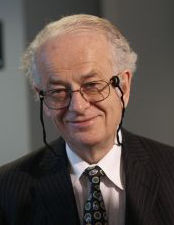
Federico Capasso
Robert L. Wallace Professor of Applied Physics, Vinton Hayes Senior Research Fellow in Electrical Engineering Harvard University School of Engineering & Applied Sciences, USA (2002): Duddell Medal and Prize | (2004) Edison Medal (2013) SPIE Gold Medal | (2016) Balzan Prize (2019) Matteucci Medal Citations (Google Scholar) 100 000 H-index (Google Scholar): Over 150 Publications: Over 500 peer-reviewed journals Patents: Over 70 US patents Key achievements
Federico Capasso
Robert L. Wallace Professor of Applied Physics, Vinton Hayes Senior Research Fellow in Electrical Engineering Harvard University School of Engineering & Applied Sciences, USAFederico Capasso received the doctor of Physics degree, summa cum laude, from the University of Rome, Italy, in 1973 and after doing research in fiber optics at Fondazione Bordoni in Rome, joined Bell Labs in 1976. In 1984, he was made a Distinguished Member of Technical Staff and in 1997 a Bell Labs Fellow. In addition to his research activity Capasso has held several management positions at Bell Labs including Head of the Quantum Phenomena and Device Research Department and the Semiconductor Physics Research Department (1987–2000) and Vice President of Physical Research (2000–2002). He joined Harvard on January 1, 2003.
AWARDS:
Duddell Medal and Prize (2002)
Edison Medal (2004)
SPIE Gold Medal (2013)
Balzan Prize (2016)
Matteucci Medal (2019)
Citations (Google Scholar): Over 100 000
H-index (Google Scholar): Over 150
Publications: Over 500 peer-reviewed journals
Patents: Over 70 US patents
Key achievements:
Bandstructure Engineering.and Quantum Cascade Lasers (QCLs)
Metasurfaces and Flat optics
Casimir forces
Awards
2021 Frederic Ives Medal and Jarus W. Quinn Prize, Optical Society of America
2020 Honorary Award, IEEE Italy Section
2019 Matteucci Medal, Accademia Nazionale delle Scienze, detta dei XL
2019 Guglelmo Marconi Science Award, UNICO
2018 Fermi Prize of the Italian Physical Society
2017 Kenneth Button Prize, International Society of Infrared, Millimeter and Terahertz Waves and Institute of Physics (UK)
2016 Balzan Prize for Applied Photonics, Balzan Foundation
2015 Rumford Prize, American Academy of Arts and Science
2013 Gold Medal of SPIE |
2013 European Physical Society Quantum Electronics and Optics Award
2013 Humboldt Research Award
2011 Jan Czochralski Award of the European Materials Research Society
2011 Galileo Galilei Medal of the Italian Society for Optics and Photonics
2010 Julius Springer Prize in Applied Physics
2010 Berthold Leibinger Zukunft Prize (Future prize)
2005 King Faisal International Prize for Science
2005 Gold Medal of the President of Italy for meritorious achievement in science
2004 Edison Medal, Institute of Electrical and Electronic Engineers (IEEE)
2004 Arhur Schawlow Prize in Laser Science, American Physical Society
2004 Tommasoni & Chisesi Prize for Outstanding Achievements in Physics
2003 Goff Smith Prize and Lecture, University of Michigan
2002 Duddell Medal and Prize of the Institute of Physics (London, UK)
2001 Robert Wood Prize of the Optical Society of America
2000 Willis E. Lamb Medal for Laser Physics and Quantum Optics
2000 NASA Group Achievement Award
1998 IEEE/Laser & Electrooptics Society W. Streifer Award for Scientific Achievement
1998 Rank Prize in Optoelectronics (UK)
1998 Capitolium Prize of the Mayor of Rome, Italy
1997 Wetherill Medal of the Franklin Institute
1997 Bell Laboratories Fellow Award
1995 Materials Research Society Medal
1995 Moet Hennessy•Louis Vuitton “Leonardo da Vinci” Award of Excellence (France)
1995 Newcomb Cleveland Prize of the American Assosciation for the Advancement of Science (AAAS) for best paper published in Science
1995 Electronics Letters Prize of the Institute of Electrical Engineers (London, UK)
1994 Heinrich Welker Memorial Medal (Germany) and International CompoundSemiconductors Symposium Award
1993 The New York Academy of Sciences Award
1991 IEEE David Sarnoff Award in Electronics
1984 Bell Laboratories Distinguished Member of Technical Staff Award
Memberships/Fellowships
2019 Fellow, National Academy of Inventors
2015 Member, Academia Europaea
2012 Foreign Member, Accademia dei Lincei
1995 Member, National Academy of Sciences
1996 Member, National Academy of Engineering
1998 Fellow, American Academy of Arts and Sciences
1999 Fellow, The Institute of Physics (UK)
1997 Honorary Member, of the Franklin Institute
1992 Fellow, American Association for the Advancement of Science
1991 Fellow, International Society for Optical Engineering (SPIE)
1989 Fellow, Optical Society of America
1987 Fellow, Institute of Electrical and Electronic Engineers
1986 Fellow, American Physical Society
Honorary Doctorates and Other Honors
2019 Honorary issue of Nanophotonics (Volume 7, Issue 6, Jun 2018) for Federico Capasso on “Metamaterials & Metasurfaces”
2011 Honorary Doctorate University Paris Diderot, France
2011 Honorary Doctorate of Technology, Lund University, Sweden
2011 Honorary Doctorate in Materials Science, University of Roma III, Italy
2003 Honorary Doctorate in Electrical Engineering, University of Bologna, Italy
2004 Commendatore of the Italian Republic
For information on Awards and Achievements follow:https://capasso.seas.harvard.edu/federico-capasso
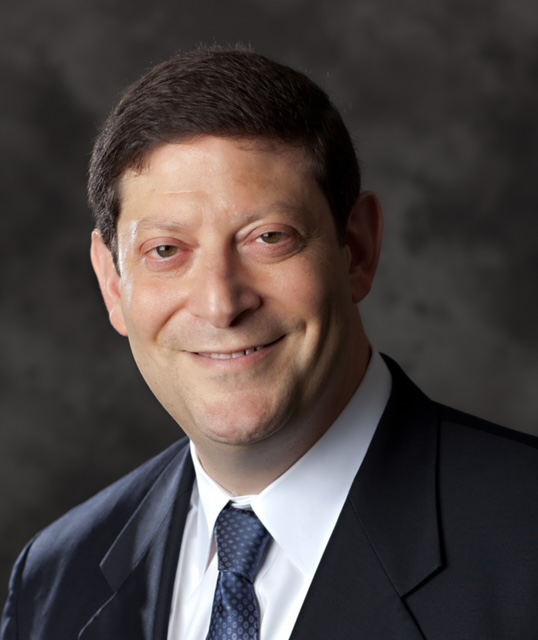
Alan Willner
Steven, Kathryn Sample Chair, EngineeringDistinguished Professor, ECE
Ming Hsieh Dept. of Electrical and Computer Engineering
University of Southern California, USA
Viterbi School of Engineering
(Joint Appointment w/ Dept. of Physics & Astronomy)
Website: https://ee.usc.edu/~willner

Alan Willner
Steven, Kathryn Sample Chair, EngineeringDistinguished Professor, ECE
Ming Hsieh Dept. of Electrical and Computer Engineering
University of Southern California, USA
Viterbi School of Engineering
(Joint Appointment w/ Dept. of Physics & Astronomy)
Website: https://ee.usc.edu/~willner
Prof. Alan Willner received the Ph.D. (1988) in Electrical Engineering from Columbia University, as well as a B.A. (1982) in Physics and an Honorary Degree (Honoris Causa, 2012) from Yeshiva University. Prof. Willner was a Postdoctoral Member of the Technical Staff at AT&T Bell Laboratories and a Member of Technical Staff at Bellcore. He is currently the Steven and Kathryn Sample Chaired Professor in Engineering and Distinguished Professor of Electrical & Computer Engineering in the Ming Hsieh Dept. of Electrical & Computer Engineering of the Viterbi School of Engineering at the Univ. of Southern California; he also has a joint appointment with the Dept. of Physics & Astronomy in the USC Dornsife College. Prof. Willner has been: a Visiting Professor at Columbia University, the Univ. College London, and the Weizmann Institute of Science; and a Visiting Scholar at Yeshiva University. He is a Member of the U.S. Army Science Board, was a Member of the Defense Sciences Research Council (a 16-member body that provided reports to the DARPA Director and Office Directors), has served on many scientific advisory boards for small companies, and has advised several venture capital firms. Additionally, Prof. Willner was Founder and CTO of Phaethon Communications, a company whose technology was acquired by Teraxion, that created the ClearSpectrum® dispersion compensator product line which is presently deployed in many commercial 40-Gbit/s systems worldwide.
Prof. Willner has received the following honors/awards: Member of the U.S. National Academy of Engineering, International Fellow of the U.K. Royal Academy of Engineering, Presidential Faculty Fellows Award from the White House, Ellis Island Medal of Honor, IEEE Eric E. Sumner Award, John Simon Guggenheim Foundation Fellowship, David & Lucile Packard Foundation Fellowship in Science & Engineering, Thomas Egleston Medal for Distinguished Engineering Achievement from Columbia Eng. Alumni Association, U.S. Vannevar Bush Defense Security Science and Engineering Faculty Fellowship (formerly NSSEFF), Fellow of National Academy of Inventors, Institution of Engineering & Technology (IET) J.J. Thomson Medal, National Science Foundation National Young Investigator Award, Fulbright Foundation Senior Scholar Research and Lecturing Fellowship, Honorary Professor of Huazhong Univ. of Science & Technology, the Optical Society (OSA) Paul Forman Engineering Excellence Award, IEEE Photonics Society Engineering Achievement Award, SPIE President's Award, IEEE Photonics Society Distinguished Lecturer Award, IEEE Photonics Society Distinguished Service Award, USC Associates Award for University-Wide Creativity in Research (highest university research award), OSA Robert Hopkins Leadership Award, Civilian Service Commendation Medal from the U.S. Dept. of the Army, USC Associates Award for University-Wide Excellence in Teaching (highest university teaching award), USC Phi Kappa Phi Faculty Recognition Award (for significant scholarly work), USC Senior Engineering Research Award, USC/TRW Best Engineering Teacher Award, USC/Northrop Outstanding Junior Engineering Faculty Research Award, 2001 Eddy Paper Award from Pennwell Publications for the Best Contributed Technical Article (across all 30 magazines in Pennwell's Advanced Technology Division), IEEE Globecom Best Paper Award, and Edwin Howard Armstrong Foundation Memorial Award for the highest-ranked EE Masters student at Columbia University. He is a Fellow of the AAAS, APS, IEEE, IET, OSA and SPIE, and he was a Fellow of the Semiconductor Research Corporation. Prof. Willner was an invited foreign dignitary representing the sciences for the 2009 Nobel Prize Ceremonies in Stockholm.
Prof. Willner's professional activities:
Co-Chair, U.S. National Academies Committee on the Optics and Photonics Study
President, The Optical Society (OSA) | President, The IEEE Photonics Society (formerly LEOS)
Co-Chair, Science & Engineering Council of the OSA
Vice-President, Technical Affairs of the IEEE Photonics Society, Photonics Division
Chair, OSA
Chair, IEEE TAB Ethics and Member Conduct Committee, General & Program
Co-Chair, the Conference on Lasers and Electro-Optics (CLEO), Program Co-Chair of the OSA Annual Meeting
General Chair of the IEEE LEOS Annual Meeting, Program Chair of Telecommunications Engineering at SPIE's Photonics West
Chair of the Unclassified Technical Program for IEEE MILCOM, Elected Member of the Board of Governors for the IEEE Photonics Society
General Co-Chair of the IEEE Photonics Society Topical Meeting on Broadband Networks, Steering Committee and Technical Committee Member of the Conference on Optical Fiber Communications (OFC),
Member, US Advisory Committee for Int'l Commission for Optics (activity of the National Academies, IEEE, OSA and SPIE).
Editorial positions:
Editor-in-Chief, IEEE/OSA Journal of Light wave Technology (JLT)
Editor-in-Chief, OSA Optics Letters
Editor-in-Chief, IEEE Journal of Selected Topics in Quantum Electronics
Associate Editor, IEEE Journal of Selected Areas in Communications Series on Optical Networks (now IEEE/OSA JOCN)
Guest Editor, JLT
JSAC for the Joint Special Issue on Multiple-Wavelength Technologies & Networks
Guest Editor, IEEE J. of Quantum Electronics Focus Issue on High-Capacity Optical Transmission Systems.
Prof. Willner has >1500 publications, including one book, 10 edited books, ~44 U.S. patents, ~47 keynotes/plenaries, ~24 book chapters, >400 refereed journal papers, and >300 invited papers/presentations. His research is in optical technologies, including: communications, signal processing, networks, and subsystems.
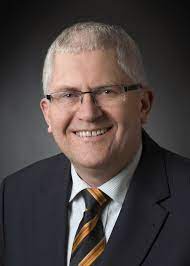
Juergen W Czarske
Fellow OPTICA (The Optical Society, Washington, DC, USA)Fellow SPIE (The International Society for Optics and Photonics, Bellingham, WA, USA)
Fellow EOS (European Optical Society, Joensuu, Finland)
Fellow IET (Institution of Engineering and Technology, former IEE, London, UK)
Fellow IOP - FInstP (Institute of Physics, London, UK)
Elected Member SAW (Saxon Academy of Sciences)
Elected Vice President of ICO (International Commission for Optics, Palaiseau/Paris, France & Miami, USA)

Juergen W Czarske
2022 Chandra S Vikram Award of SPIE2020 Laser Intrumentation Award of IEEE
2019 Joseph Fraunhofer Award/Robert M Burley Prize of OPTICA
2008 Berthold Leibinger Innovation Prize of Trumpf Laser
Founding Chair Holder of Measurement Systems
Director of Institute for Circuits and Systems
Director of center BIOLAS (Biomedical Computational Laser Systems)
School of Electrical and Computer Engineering
Coopted Professor for Physics School of Science
TU Dresden, Dresden, Germany
Juergen W Czarske (Fellow EOS, OPTICA, SPIE, IET, IOP, Senior Member IEEE) is director, full chair professor and senator of the Excellence University TU Dresden, Germany. He is director of Competence Center Biomedical Computational Laser Systems (BIOLAS) and advisor of SPIE-OPTICA-Student Chapter Dresden. Juergen is an international prize-winning inventor of laser-based technologies. His awards include the 2008 Berthold Leibinger Innovation Prize of Trumpf Laser, 2019 OPTICA Joseph-Fraunhofer-Award/Robert-M.-Burley-Prize, 2020 Laser Instrumentation Award of IEEE Photonics Society, 2020 and 2021 SPIE Community Champion for volunteer activities, and 2022 SPIE Chandra S Vikram Award. Juergen has conducted more than 800 talks and papers, including more than 250 papers in peer-reviewed journals, over 150 invited talks and over 30 patents. He is Vice President of International Commission for Optics, ICO, and was the general chair of the world congress ICO-25-OWLS-16-Dresden-Germany-2022 with 3 Nobel laureates and participants from over 55 countries of 5A (Africa, America, Asia, Australia, and Amazing Europe).
List of Selected Awards:
- SPIE Chandra S Vikram Award in Optical Metrology, awarded in San Diego, CA, USA, 8/2022
- Fellow Award (FInstP) of Institute of Physics (IOP), London, UK, 7/2022
- Fellow Award of Institution of Engineering and Technology (IET), formerly IEE, London, UK, 7/2021
- SPIE Community Champion 2020, highlighted by SPIE Director Nelufar Mohajeri, WA, USA, 5/2021
- Inaugural Laser Instrumentation Award of IEEE Photonics Society, IEEE, New York City, USA, 7/2020
- SPIE Community Champion 2019 for outstanding volunteerism, awarded by SPIE President, Arizona/USA, 1/2020
- OPTICA Joseph Fraunhofer Award / Robert M. Burley Prize, awarded in Washington DC, USA, 9/2019
- Best Paper Awards, 2nd and 3rd, Imaging and Applied Optics Congress of OSA, Orlando, FL, USA, 6/2018
- Best Paper Prize of the 118th Annual Conference of DGaO-German Branch of EOS, 6/2017
- Fellow Award, EOS (European Optical Society), Joensuu, Finland, awarded in Berlin, 8/2016
- Best Paper Prize of the 18th VDI / ITG Symposium Sensors and Measuring Systems, Nuremberg, 5/2016
- Fellow Award, SPIE - The International Society for Optics and Photonics, San Francisco, USA, 12/2015
- Fellow Award, OSA (The Optical Society), Washington, DC, awarded in San Jose, USA, 10/2015
- Award on Precision Measurement of Institute of Physics - IOP, London, UK, 6/2015
- Reinhart Koselleck-Project in systems engineering, German Research Foundation, Bonn, 7/2014
- Selected paper - Highlights of 2013, Journal of Physics D - Applied Physics, IOP, Bristol, UK, 1/2014
- Excellent paper, awarded at 33. Annual meeting of the Japan Laser Society, Tokyo, Japan, 5/2013
- Best Paper Award Instrumentation of American Soc. of Mech. Engineers, Vancouver/Canada, 6/2011
- Nomination Award for Kaiser-Friedrich-Research-Prize-2009 (final three), Goslar, 9/2009
- International Berthold Leibinger Innovation Prize, awarded at Trumpf Laser, Ditzingen, 9/2008
- Highly commended article of Measurement Science and Technology (MST), IOP, Bristol, UK, 12/2001
- Measurement Technique Prize of Association of University Professors (AHMT), awarded at TU Munich, 9/1996
- Young Researcher Prize, awarded by the education minister Peter Bendixen, Kiel Castle, Kiel, 4/1984
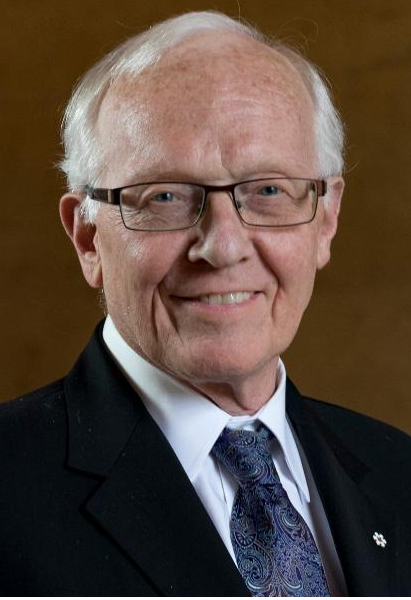
Paul Corkum
University of Ottawa, CanadaDeveloping ultra-rapid laser technology

Paul Corkum
University of Ottawa, CanadaDeveloping ultra-rapid laser technology
Paul Corkum graduated from Lehigh University, USA, in 1972 with a Ph. D. in theoretical physics. In 1973 he joined the staff of the National Research Council of Canada where he built one of the world’s most famous groups working on the interaction of very short light pulses with matter. Corkum is a Full Professor of Physics, a Distinguished Research Chair at the University of Ottawa and directs the Joint NRC/University of Ottawa Attosecond Science Laboratory. He is a member of the Royal Societies of London and of Canada and also a foreign member of the US National Academy of Science, the Austrian Academy of Science, and the Russian Academy of Sciences. Among his many honours and recognitions, he has received the 2017 Royal Medal, for his major contributions to laser physics and the development of the field of attosecond science, as well as the National Research Council of Canada’s Schneider Medal, their highest distinction bestowed upon employees. In 2018, Corkum was awarded both the SPIE Gold Medal, and the Isaac Newton Medal and Prize from the UK Institute of Physics, and is a recipient of the 2019 Willis E. Lamb Award for Laser Science and Quantum Optics. Most recently, The Wolf Foundation selected Corkum as a 2022 Wolf Prize Laureate in Physics and in 2023 he is a co-recipient of the BBVA Foundation 15th Edition Frontiers of Knowledge Award in Basic Sciences.
MAJOR SCIENTIFIC HONOURS
⋅ Wolf Prize in Physics, Wolf Foundation, 2022
⋅ Willis E. Lamb Award for Laser Science and Quantum Optics, 2019
⋅ Isaac Newton Medal and Prize, Institute of Physics, 2018
⋅ SPIE Gold Medal, 2018
⋅ Schneider Medal, National Research Council Canada, 2017
⋅ Royal Medal, Royal Society, 2017
⋅ Foreign member of the Russian Academy of Sciences, 2016
⋅ Lomonosov Gold Medal of the Russian Academy of Sciences, (for outstanding contribution
in ultrafast physics), 2015
⋅ Thomson Reuters Citation Laureate (awarded to researchers who are “of Nobel class” and likely to earn the Nobel someday), 2015
⋅ Harvey Prize, The Technion, Israel Institute of Technology, 2013
⋅ King Faisal International Prize for Science (Physics), 2013
⋅ Foreign Member of the Austrian Academy of Sciences, 2012
⋅ Fellow of Optical Society of America, 2010
⋅ Foreign member of US Academy of Sciences, 2009
⋅ Officer of the Order of Canada, 2007
⋅ Fellow of the American Physical Society, 2007
⋅ The Killam Prize for Physical Sciences, Canada Council of the Arts, 2006
⋅ Arthur L. Schawlow Prize in Laser Science, American Physical Society, 2006
⋅ Charles Hard Townes Award, Optical Society of America, 2005
⋅ Fellow of the Royal Society (of London), 2005
⋅ Fellow of the Institute of Physics, 2002
⋅ Fellow of the Royal Society of Canada, 1996
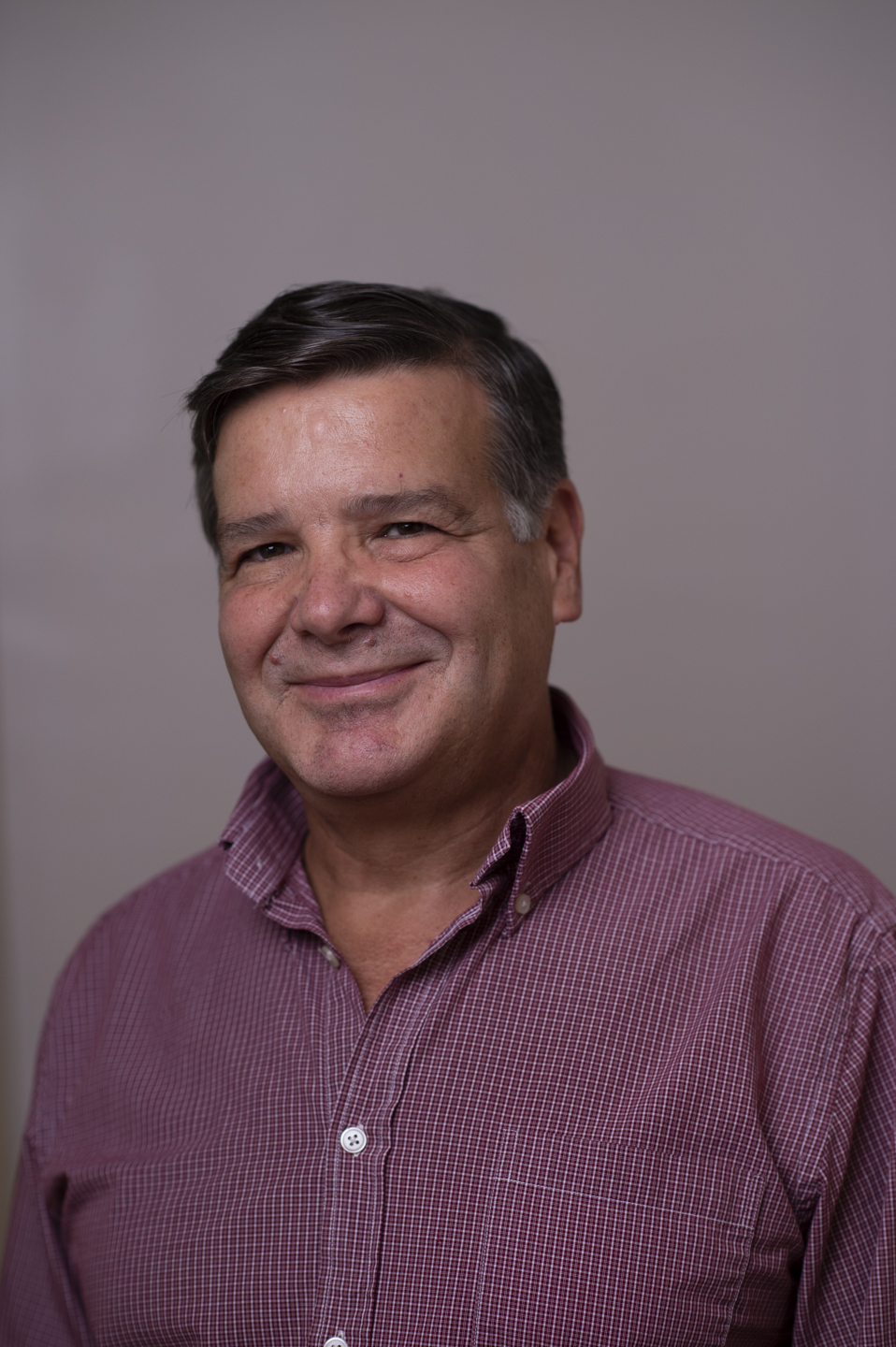
Enrique J. Kiko Galvez
Charles A. Dana Professor of Physics and Astronomy Chair, Department of Physics and Astronomy Colgate University, USA2020 Jonathan F. Reichert and Barbara Wolff-Reichert Award

Enrique J. Kiko Galvez
Charles A. Dana Professor of Physics and Astronomy Chair, Department of Physics and Astronomy Colgate University, USA2020 Jonathan F. Reichert and Barbara Wolff-Reichert Award
Enrique (Kiko) Galvez earned his PhD in physics at Notre DamKiko head shote in 1986. He has been a member of the faculty at Colgate University since 1988, and is currently the Charles A. Dana Professor of Physics and Astronomy. His research focuses on atomic and optical physics, and physics education, and he has been funded by numerous grants from the NSF and Research Corporation. His recent research projects include experimental atomic physics with Rydberg atoms, geometric phases in optics, and photon entanglement. His educational work includes modernizing the introductory curriculum and developing new teaching laboratories for quantum mechanics.
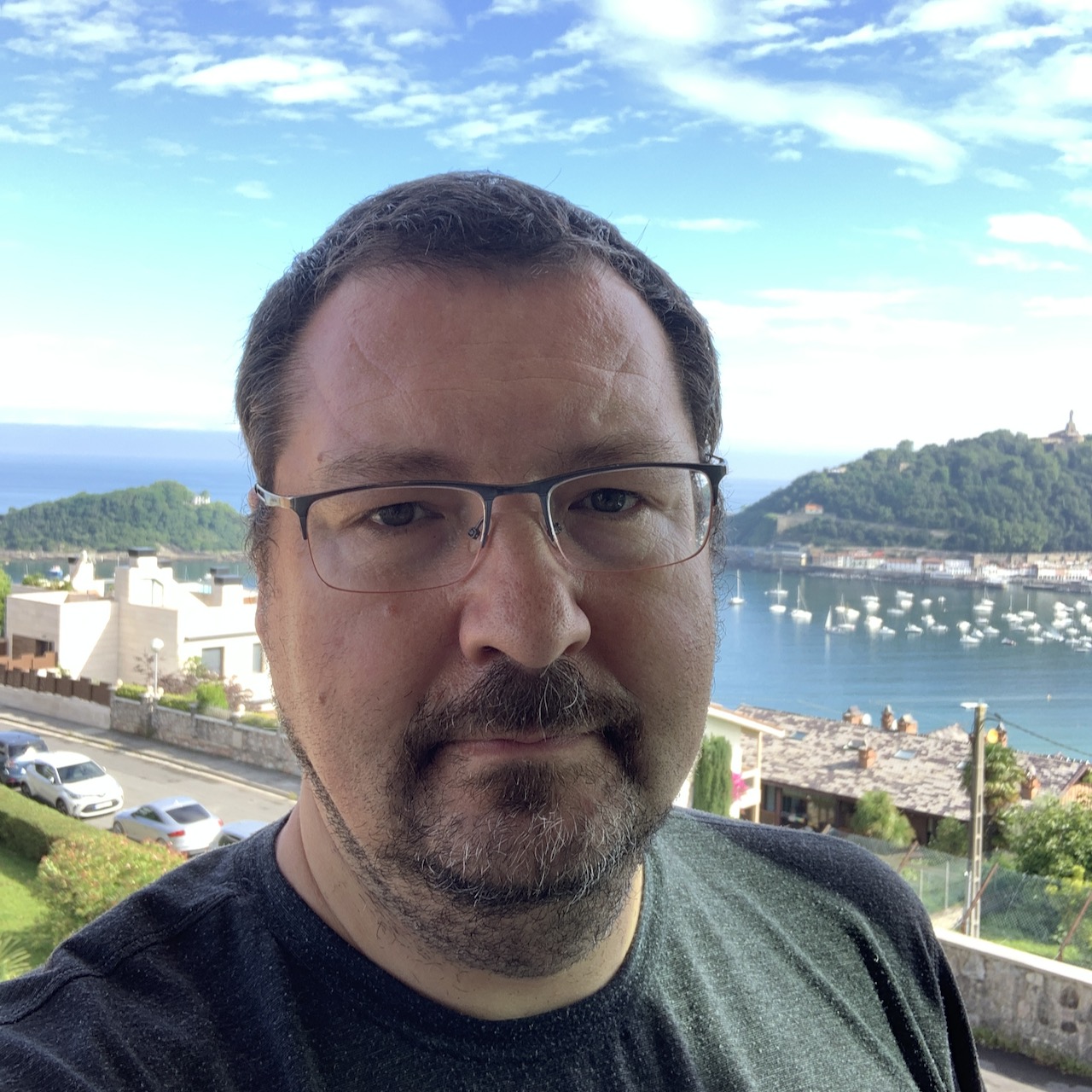
Konstantin Bliokh
Donostia International Physics Center, Spain
Konstantin Bliokh
Donostia International Physics Center, SpainKonstantin Bliokh received the MSc and PhD degrees in physics from the Kharkov National University (Ukraine) in 1998 and 2001, respectively. After that, he worked as a research scientist at the Institute of Radio Astronomy (Ukraine, 2001–2009). He was a post-doctoral fellow at Bar-Ilan University (Israel, 2003–2005), a visiting research scientist at Technion–Israel Institute of Technology (Israel, 2007), a Linkage International research fellow at the Australian National University (Australia, 2008–2009), a Marie Curie research fellow at the National University of Ireland (Ireland, 2009–2011), an associate professor at the Australian National University (Australia, 2015–2019), and a senior research scientist at RIKEN (Japan, 2011–2024). Starting from 2024, he is an Ikerbasque Professor at the Donostia International Physics Center (Spain). His ongoing research areas include: complex wave systems, geometric phases, spin-orbit interactions, wave momentum and angular momentum, wave vortices, wave-matter interactions, etc. He has co-authored more than 130 scientific papers, reviews, and book chapters.
Keynote Speakers
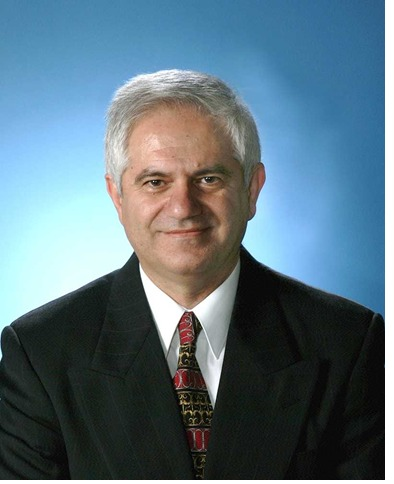
Dr. Alex Kazemi
The Boeing Company Chief Fiber Optic Architect, Associate Tech Fellow Product Development, Advanced Concepts
Dr. Alex Kazemi
The Boeing Company Chief Fiber Optic Architect, Associate Tech Fellow Product Development, Advanced ConceptsDr. Alex Kazemi a world recognized micro technologist, and materials scientist is focusing on development of fiber optics, miniaturized fiber components, fiber optic sensors, and micro/nano technology of laser components for aviation, aerospace and space applications. He is developer of the lightest fiber optic cable in aviation history, World 1st fiber optic sensor for rocket engine, United States first fiber optic delivery system for micro welding of laser chips, and leading-edge technologies. He is Chief Fiber Optic Architect, Associate Technical Fellow, and worked 27 years for Boeing as well as 10 years for telecom, lasers, sensors and MEMS industries. He has authored/edited 8 books and one book chapter in the area of photonics, lasers, sensors, fiber optics, micro and nano technologies, plus published over 48 papers in International Journals and hundreds of presentations throughout of conferences and technical community’s world-wide. He has been Chairman of SPIE International Conferences in Photonics Applications for Fiber Optic Sensors and Lasers for 8 years and for past four years has been Chairman, and Chief Editor of Excel Global International Conference on Lasers, Optics, Photonics. He received International Award for his pioneering work for the development of fiber optic sensors for space applications. In recent survey by “Research Gate” organization close to 2000 of his peers reviewed his published papers. He has bestowed hundreds of recognition, awards and patents.
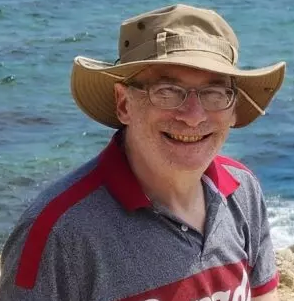
Doug Dykaar
Founder, DifTek Lasers Inc., Canada
Doug Dykaar
Founder, DifTek Lasers Inc., CanadaDr. Doug Dykaar is the founder of DifTek Lasers, Inc. He received the PhD in Electrical Engineering from the University of Rochester in 1987 in Gerard Mourou's Ultrafast Science group. He was a member of technical staff at AT&T Bell Labs Murray Hill, Research manager at DALSA, and Research Scientist at Thalmic/North. Doug also taught at Conestoga College in their 4-year Bachelor of Engineering Program. At last count, he had over 100 patent applications and 60 publications. His research interests span lasers to superconductivity to materials science to composite electronics.
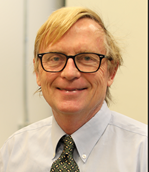
Peter Hesketh
Georgia Institute of Technology, USA
Peter Hesketh
Georgia Institute of Technology, USADr. Hesketh's research interests are in Sensors and Micro/Nano-electro-mechanical Systems (MEMS/NEMS). Many sensors are built by micro/nanofabrication techniques and this provides a host of advantages including lower power consumption, small size and light weight. The issue of manipulation of the sample in addition to introduce it to the chemical sensor array is often achieved with microfluidics technology. Combining photolithographic processes to define three-dimensional structures can accomplish the necessary fluid handling, mixing, and separation through chromatography. For example, demonstration of miniature gas chromatography and liquid chromatography with micromachined separation columns demonstrates how miniaturization of chemical analytical methods reduces the separation time so that it is short enough, to consider the measurement equivalent to "read-time" sensing.
A second focus area is biosensing. Professor Hesketh has worked on a number of biomedical sensors projects, including microdialysis for subcutaneous sampling, glucose sensors, and DNA sensors. Magnetic beads are being investigated as a means to transport and concentrate a target at a biosensor interface in a microfluidic format, in collaboration with scientists at the CDC.
His research interests also include nanosensors, nanowire assembly by dielectrophoresis; impedance based sensors, miniature magnetic actuators; use of stereolithography for sensor packaging. He has published over sixty papers and edited fifteen books on microsensor systems.
Distinctions & Awards
Satish Dhwan Visiting Chair Professor, Indian Institute of Sciences, Bangalore, INIDA, 2019
Thank a Teacher Award for ME4766 Micro/Nano-Scale Devices (2018)
Georgia Institute of Technology Outstanding Achievement in Research Program Development Award, 2017
Thank a Teacher Award for ME3345 Introduction to Heat Transfer (2017)
Outstanding Achievement in Research Program Development Award, jointly with M. Bakir, S. Graham, S. Sitaraman, M. Swaminathan, M. Tentzeris (2017)
Editorial Board of Journal published by Nature: Microsystems and Nanoengineering (2015)
President of the Georgia Tech Chapter of Sigma Xi (2014-16)
Outstanding Achievement Award of the Sensor Division of the Electrochemical Society (2014)
Sigma Xi, Vice President of Georgia Tech Chapter, 2012-2014
Chair of Honors and Awards Committee, Electrochemical Society, 2011-2013
Georgia Tech Center for Enhanced Teaching and Learning
Tech to Teaching Mentor Award, 2010
Thank a Teacher Certificate, 2008 and 2010
Class of 1969 Teaching Fellow, 2002
American Society of Mechanical Engineers Fellow, 2009
The Electrochemical Society (ECS)
Fellow, 2009
Chairman Sensor Division, 1998-2000
Guest Professor of Huazhong University of Science and Technology, 2005-2007
Artech House, Inc. MEMS Series Editor, 2003-2005
American Association for the Advancement of Science Fellow, 2004
Whitaker Foundation Biomedical Engineering Research Grant Award, 1994-98
Patents
A. Lotfi, M. Navaei, P. J. Hesketh, “Balanced Thermal Conductivity Gas Sensor Provisional patent Application number 62852615, May 24th 2019
S. Hanasoge, P. J. Hesketh, A. Alexeev, “System and Methods to Produce Metachronal Motion of Artificial Magnetic Cilia” U.S. Patent Application No. 62/748,641 October 22nd 2018
Single Substrate Electromagnetic Actuator, U. S. Patent 7474180, with J. Sutano-Bintro, issued January 6, 2009
Apparatus for Fluid Storage and Delivery at a Substantially Constant-Pressure, U. S. Patent 7,471,337, with R. Luharuka and C.-F. Wu, issued January 27, 2009
Miniature Optically Coupled Electrically Isolated Ultrasensitive Dynamic Pressure Detector, U.S. Patent 7,392,707, with Lid Wong and Sangkyung Kim, July 1, 2008
Porous Gas Sensors and Method of Preparation Thereof, U.S. Patent 7,141,859, with J. Gole, J. DeBoer, and S. Lewis, November 28, 2006
Porous Gas Sensors and Method of Preparation Thereof, U.S. Patent 6,893,892 B2, with J. Gole and S. Lewis, May, 17, 2005
Microfabricated Porous Silicon Gas Sensor, U.S. Patent 6,673,644, with L. T. Seals and J. L. Gole, January 6, 2004
Pin Array Assembly and Method of Manufacture, U.S. Patent 6,455,352, with Joel Pikarsky and Gennadiy Yershov, September 24, 2002
Miniature Electrically Operated Diaphragm Valve, U. S. Patent 6,328,279, with Douglas R. Adkins, Barry L. Spletzer, Chungnin C. Wong, Gregory C. Frye-Mason, and Gary J. Fisher, December 11, 2001
Antibody Covalently Bound Immunobiosensor, U. S. Patent No. 5,567,301, with J. Stetter, S. Gendel, and G. J. Maclay, October 22, 1996
Miniature Pressure Sensor and Pressure Sensor Arrays, U. S Patent No. 5,277,067, with C. E. Holland, January 11, 1994
Miniature Pressure Sensor and Pressure Sensor Arrays, U. S Patent No. 5,163,328, with C. E. Holland, November 17, 1992
Thermopile Having Reduced Thermal Noise, U. S. Patent 5,087,312, with Martin T. Gerber, February 11, 1992
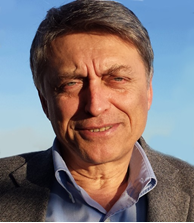
Boris Gramatikov
Wilmer Eye InstituteJohns Hopkins University, USA

Boris Gramatikov
Wilmer Eye InstituteJohns Hopkins University, USA
Boris Gramatikov is an Associate Professor at Johns Hopkins University, Department of Ophthalmology. He obtained his Dipl.- Ing. degree in Biomedical Engineering in Germany, and his Ph.D. in Bulgaria. He has completed a number of postdoctoral studies in Germany, Italy and the United States. He joined the faculty of the Biomedical Engineering Department of Johns Hopkins in 1996, and has been working in the Laboratory of Ophthalmic Instrumentation Development at The Wilmer Eye Institute since 2000. His areas of expertise include electronics, optoelectronics, computers, computer modeling, signal/image processing, data analysis, instrumentation design, biophotonics, ophthalmic and biomedical optics, and polarization optics, all applied to the development of diagnostic methods and devices for ophthalmology and vision research. His team has developed a series of pediatric vision screeners. He has over 120 publications, 41 of which in high-impact peer- reviewed journals. He serves as a reviewer and editorial board member with a number of technical and medical journals. Boris is the Director for Continuing Education of the Baltimore Section of the IEEE.
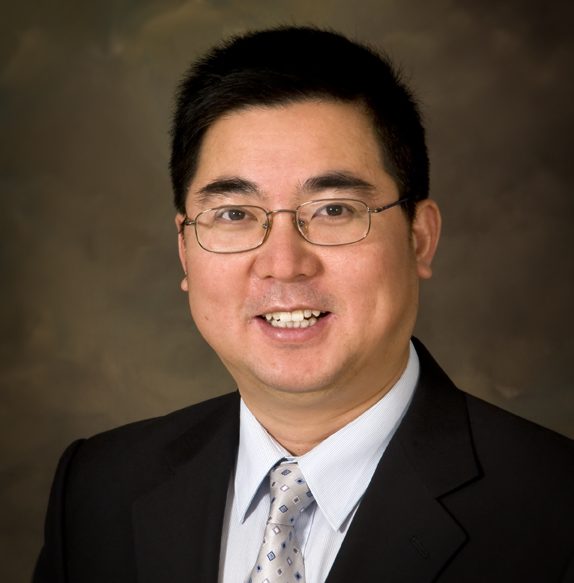
Haishan Zeng, PhD
Prism Award (Life Sciences & Biophotonics) (2013-SPIE)University of British Columbia, Canada

Haishan Zeng, PhD
Prism Award (Life Sciences & Biophotonics- 2013 by SPIEUniversity of British Columbia, CanadaDr. Haishan Zeng is a distinguished scientist with the Integrative Oncology Department (Imaging Unit) of the BC Cancer Research Centre and a professor of Dermatology, Pathology, and Physics at the University of British Columbia, Vancouver, Canada. For over 30 years, Dr. Zeng’s research has been focused on the optical properties of biological tissues, light-tissue interaction, and nanomaterials enhanced light-tissue interaction as well as their applications in medical diagnosis and therapy. His group has pioneered the multiphoton absorption based laser therapy and is at the leading position in endoscopy imaging and Raman spectroscopy for in vivo early cancer detection, and silver/gold nanoparticles based surface enhanced Raman spectroscopy analysis of body fluids for cancer screening. He has published over 170 refereed journal papers, 17 book chapters, and 1 book (“Diagnostic Endoscopy”, CRC Press Series in Medical Physics and Biomedical Engineering). Dr. Zeng serves as Editorial Board members for the Journal of Biomedical Optics and the recently launched Translational Biophotonics. He is an Executive Organizing Committee member of the annual SPIE International Symposium on Biomedical Optics. Dr. Zeng’s research has generated 28 granted patents related to optical diagnosis and therapy. Several medical devices derived from these patents including fluorescence endoscopy (ONCO-LIFE™) and rapid Raman spectroscopy (Vita Imaging Aura™) have passed regulatory approvals and are currently in clinical uses around the world. The Aura™ device using Raman spectroscopy for non-invasive skin cancer detection was awarded the Prism Award in the Life Sciences and Biophotonics category in 2013 by SPIE - the International Society for Optics and Photonics.
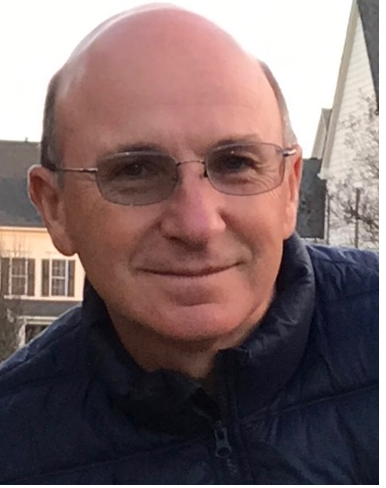
Andrei Afanasev
The George Washington UniversityUnited States

Andrei Afanasev
The George Washington UniversityUnited States
Andrei Afanasev currently leads the physics effort for the GWU energy initiative. He has made significant research contributions in the field of nuclear and particle physics probed with high-power electron accelerators and free-electron lasers.
Presently Prof. Afanasev contributes to energy research in three areas: (a) High-power particle accelerators that may serve as drivers for accelerator-driven subcritical nuclear reactors (ADSR), as well as probes of new materials for energy applications; (b) Development of novel techniques in photovoltaics, including nanostructures, quantum dots, and surface acoustic waves; (c) New technologies for non-proliferation of nuclear materials.
Prof. Afanasev is the Director of the Photoemission Research Laboratory where new solutions for particle accelerator sources and photovoltaics are being developed and tested.
Research Interests:
Nuclear & Particle Physics, Physics of Particle Accelerators; Quantum Electrodynamics; Condensed Matter Physics

Brock Koren
DRS DAY LIGHT Solutions, USA
Brock Koren
DRS DAY LIGHT Solutions, USABrock Koren is an executive with over 25 years of experience in high technology companies and has a Bachelor of Science in Electrical Engineering from the California State University of Long Beach. Mr. Koren is currently the Director of Sales/Business Development for DRS Daylight Solutions, the world’s leading provider of best-in-class mid-infrared, quantum cascade laser sources for the life sciences, research, industrial, and defense industries. Mr. Koren was most recently the Vice President of Sales and Marketing/Product Management for Gamma Scientific, a manufacturer of light measurement instruments for display testing, LED testing, light meters, light sources, and spectrometers. He is a native Californian and has spent his entire life in Southern California. He currently resides in San Diego, where he enjoys physical and outdoor activities and restoring vintage Tektronix Oscilloscopes.
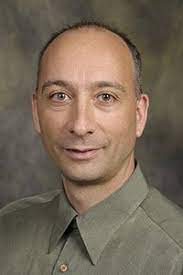
Ivan Divliansky
CREOL, The College of Optics and Photonics, USA
Ivan Divliansky
CREOL, The College of Optics and Photonics, USADr. Ivan Divliansky is a Research Assistant Professor in Optics and Photonics at CREOL- The College of Optics and Photonics at UCF with more than 20 years of experience. Dr. Divliansky has 33 peer review publications in journals such as Nature Photonics, Light: Science & Applications, Advanced Materials, Applied Physics Letters, Optics Letters, and others with over 1550 total citations and h-index of 16 (Google Scholar). He has edited one book and authored two book chapters, co-authored two patents, and is an Editorial Board member of the Journal of Lasers, Optics & Photonics. He is also frequent referee for Optics Express, Optics Letters, Applied Optics, and other peer review journals. Currently, his research topics include solid state and fiber lasers systems design, high-power laser beam combining, implementation of volume Bragg gratings in different photonics areas, and others. His research has also led to new applications and further development of various volume holographic elements.

Igor Meglinski
Professor, Quantum Biophotonics and Biomedical Engineering, Aston University, UK
Igor Meglinski
Professor, Quantum Biophotonics and Biomedical Engineering, Aston University, UKIgor Meglinski is Professor in Quantum Biophotonics and Biomedical Engineering and the Head of the Quantum Biophotonics Research Group at the College of Engineering & Physical Sciences, Aston University (UK). His research focuses on advancing the field of quantum biophotonics, particularly in the application of Orbital Angular Momentum (OAM) of light and quantum entagelemnts for tissue characterization and the exploration of intracellular communication. His significant contributions to the field have earned him recognition as one of the top 100 influencers in Life Sciences and Biomedical Engineering, as well as a place among the Top 100 in Photonics in 2024. He is a Chartered Physicist (CPhys), Chartered Engineer (CEng), and a Fellow of several prestigious societies, including the Institute of Physics, the Royal Microscopical Society, SPIE, and OPTICA (formerly the Optical Society of America).
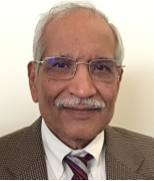
Rajpal Sirohi
2022 SPIE Maria J. Yzuel Educator AwardPadma Shri, FNAE, FNASc, FOSA, FSPIE, FOSI, AvH Awardee
Alabama A&M University, USA

Rajpal Sirohi
2022 SPIE Maria J. Yzuel Educator AwardPadma Shri, FNAE, FNASc, FOSA, FSPIE, FOSI, AvH Awardee
Alabama A&M University, USA
Prof. Rajpal Singh Sirohi did his Masters in Physics in 1964 from Agra University, and Post M.Sc. in Applied Optics and Ph. D. in Physics both from Indian Institute of Technology, New Delhi in 1965 and 1970 respectively. Prof. Sirohi was Assistant Professor in Mechanical Engineering Department at Indian Institute of Technology Madras during 1971-1979. He became Professor in the Physics Department of the same Institute in 1979. He joined IIT Delhi as Director in 2000 and superannuated in April 2005 from IIT Delhi. During 2000 - 2011, he had been deeply engaged in academic administration and research as Director IIT Delhi (December 2000 - April 2005); Vice-Chancellor, Barkatullah University, Bhopal; (April 2005 - September 2007); Vice-Chancellor, Shobhit University, Meerut (October 2007 - March 2008); Vice-Chancellor of Amity University Rajasthan, Jaipur (March 2008 - October 2009) and Vice-Chancellor, Invertis University, Bareilly (January 2011 – October 2011). He was also the Visitor to the Teerthanker Mahaveer University, Moradabad (June 2012- June 2013). He is currently serving in the Physics Department, Alabama A&M University, Huntsville, Alabama USA. Prior to this (2013 - 2016), he was the Chair Professor, Physics Department, Tezpur University, Tezpur, Assam, India. He was Distinguished Scholar in the Department of Physics and Optical Engineering, Rose Hulman Institute of Technology, Terre Haute, Indian USA during 2011 - 2013. Prof. Sirohi worked in Germany as a Humboldt Fellow at PTB, Braunschweig, and as a Humboldt Awardee at Oldenburg University. He was a Senior Research Associate at Case Western Reserve University, Cleveland, Ohio, and Associate Professor, and Distinguished Scholar at Rose Hulman Institute of Technology, Terre Haute, Indiana. He was ICTP (International Center for Theoretical Physics, Trieste Italy) Consultant to Institute for Advanced Studies, University of Malaya, Malaysia and ICTP Visiting Scientist to the University of Namibia. He was Visiting Professor at the National University of Singapore, and EPFL, Lausanne, Switzerland. Prof. Sirohi is Fellow of several important academies/ societies in India and abroad including the Indian National Academy of Engineering; National Academy of Sciences, Optical Society of America; Optical Society of India; SPIE (The International Society for Optical Engineering), Instrument Society of India and honorary fellow of ISTE and Metrology Society of India. Recently, the Optical Society of India conferred on him the distinction of Distinguished Fellow. He is member of several other scientific societies and founding member of India Laser Association. Prof. Sirohi was also the Chair for SPIE-INDIA Chapter, which he established with co-operation from SPIE in 1995 at IIT Madras. He was invited as JSPS (Japan Society for the Promotion of Science) Fellow and JITA Fellow to Japan. He was a member of the Education Committee of SPIE. Prof. Rajpal Singh Sirohi did his Masters in Physics in 1964 from Agra University, and Post M.Sc. in Applied Optics and Ph. D. in Physics both from Indian Institute of Technology, New Delhi in 1965 and 1970 respectively. Prof. Sirohi was Assistant Professor in Mechanical Engineering Department at Indian Institute of Technology Madras during 1971-1979. He became Professor in the Physics Department of the same Institute in 1979. He joined IIT Delhi as Director in 2000 and superannuated in April 2005 from IIT Delhi. 2 Prof. Sirohi has received the following awards from various organizations: Humboldt Research Award (1995) by the Alexander von Humboldt Foundation, Germany; Galileo Galilei Award of International Commission for Optics (1995); Amita De Memorial Award of the Optical Society of India (1998); 13th Khwarizmi International Award, IROST (Iranian Research Organisation for Science and Technology (2000); Albert Einstein Silver Medal, UNESCO (2000); Dr. YT Thathachari Prestigious Award for Science by Thathachari Foundation, Mysore (2001); Pt. Jawaharlal Nehru Award in Engineering & Technology for 2000, (awarded in 2002) by MP Council of Science and Technology; NRDC Technology Invention Award on May 11, 2003; Sir CV Raman Award: Physical Sciences for 2002 by UGC (University Grants Commission); Padma Shri, a national Civilian Award (2004); Sir CV Raman Birth Centenary Award (2005) by Indian Science Congress Association, Kolkata; Holo-Knight (2005), inducted into Order of Holo- Knights during the International Conference-Fringe 05-held at Stuttgart, Germany; Centenarian Seva Ratna Award (2004) by The Centenarian Trust, Chennai; Instrument Society of India Award (2007); Gabor Award (2009) by SPIE (The International Society for Optical Engineering) USA; UGC National Hari OM Ashram Trust Award - Homi J. Bhabha Award for Applied Sciences (2005) by UGC; Title ‘Freedom of the Institute’ conferred by Indian Institute of Technology Delhi in 2011; Distinguished Alumni Award (2013) by Indian Institute of Technology Delhi; Vikram Award 2014 by SPIE (The International Society for Optical Engineering) USA. According to Stanford University ranking report, he is listed with in 2% of the global scientists in Optoelectronics and Photonics. Prof. Sirohi was the President of the Optical Society of India during 1994-1996. He was also the President of Instrument Society of India for three terms (2003-06, 2007-09, 2010-12). He was on the International Advisory Board of the Journal of Modern Optics, UK and on the editorial Boards of the Journal of Optics (India), Optik, Indian Journal of Pure and Applied Physics. He was Guest Editor to the Journals “Optics and Lasers in Engineering” and “Optical Engineering”. He was Associate Editor of the International Journal “Optical Engineering”, USA during (1999-Aug.2013), and currently is its Senior Editor (since August 2013). He is the Series Editor of the Series on ‘Advances in Optics, Photonics and Optoelectronics’ published by Institute of Physics (IoP) Publishing, UK. Prof. Sirohi has 496 papers to his credit with 250 published in national and international journals, 78 papers in Proceedings of the conferences and 168 presented in conferences. He has authored/co-authored/edited thirteen books including five milestones for SPIE. He was Principal Coordinator for 26 projects sponsored by Government Funding Agencies and Industries, has supervised 25 Ph.D. theses, 7 M.S. theses and numerous B.Tech., M.Sc. and M.Tech. theses. Prof. Sirohi’s research areas are Optical Metrology, Optical Instrumentation, Laser Instrumentation, Holography and Speckle Phenomenon.
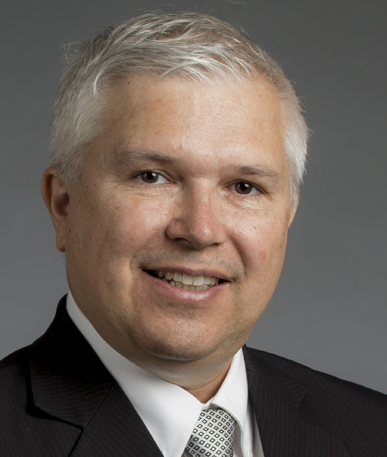
William (Doc A) Arrasmith
Florida Institute of Technology, USASession Chair, LOPS Conferences.

William (Doc A) Arrasmith
Professor of Systems Engineering and Engineering Physics, College of Engineering and Science Department of Computer Engineering and Science, Florida Institute of Technology, USADr. Arrasmith is currently a professor in the Department of Engineering Systems at FIT. He has 20 years experience with government research and development programs and has had extensive exposure to electro-optical, infrared, and laser detection systems.
Prior to his position at Florida Tech, Dr. Arrasmith served as Program Manager of Physics and Electronics at the Air Force Office of Scientific Research (AFOSR) in Washington DC. In 1997 he moved to the United States Naval Academy in Annapolis, Maryland to teach courses in Engineering and Linear Adaptive Optics. Dr. Arrasmith was then reassigned to the Air Force Technical Applications Center (AFTAC) at Patrick Air Force Base where he became Chief of the Systems and Technology Division. He was later appointed Division Chief for the Advanced Science and Technology Division of the AFTAC and remained in the position until joining Florida Tech in 2003.
Research Interests
Adaptive optics
Cellular neural networks
Advanced sensor, Imaging
Detection concepts
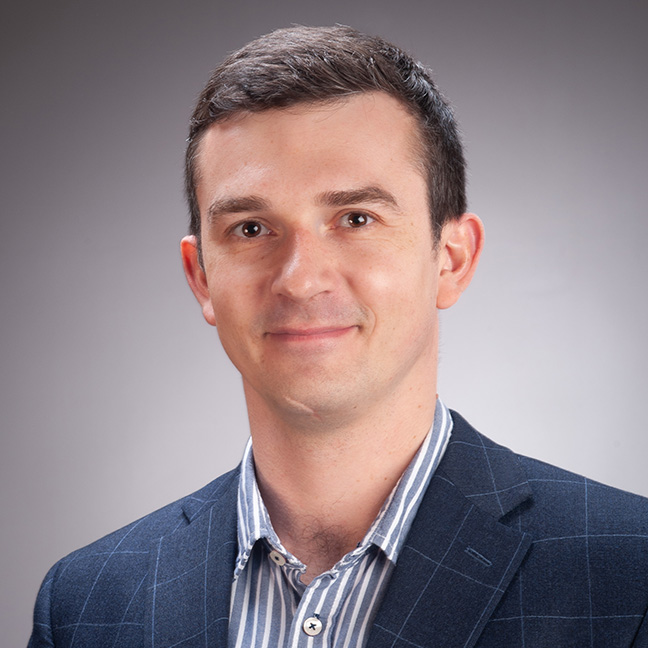
Alexander Doronin
Victoria University of WellingtonNew Zealand

Alexander Doronin
Victoria University of WellingtonNew Zealand
Dr Alexander Doronin is an Assistant Professor in Computer Science at Victoria University of Wellington (New Zealand). His research interests are interdisciplinary and lie at the interface between Computer Graphics, Biomedical Optics and most recently Artificial Intelligence focusing on modelling of light transport in turbid media, development of novel optical diagnostics modalities, physically-based rendering, optical measurements/instrumentation, acquisition and building of realistic material models, colour perception, translucency, appearance and biomedical visualization. He has extensive recognized experience in the design of forward and inverse algorithms of light scattering in turbid tissue-like media simulations and created a generalized Monte Carlo model of photon migration which has found a widespread application as an open-access computational tool for the needs of light transport communities in Biophotonics, Biomedical Imaging and Graphics.
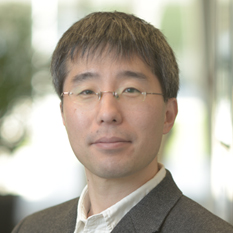
Jeon Woong Kang
Research Scientist, MIT, USA
Jeon Woong Kang
Research Scientist, MIT, USA
Hyeon Jeong Lee
Zhejiang University, China
Hyeon Jeong Lee
Zhejiang University, ChinaKey Session Speakers
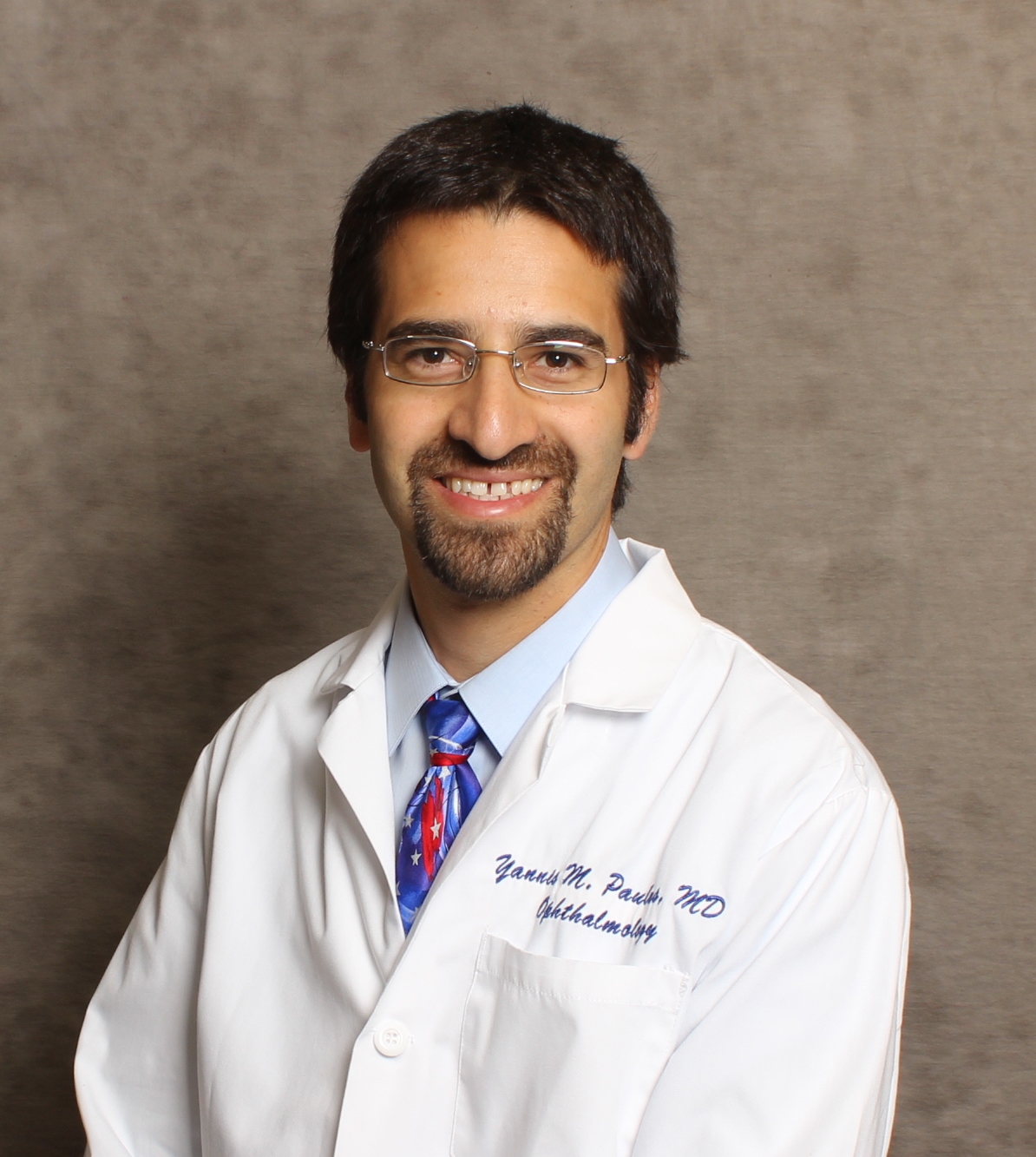
Yannis M. Paulus, MD, FACS
Helmut F. Stern Career Development Professor of Ophthalmology & Visual SciencesDepartment of Ophthalmology and Visual Sciences
Associate Professor, Department of Biomedical Engineering
Medical Director, Grand Blanc ACU, Kellogg Eye Center
University of Michigan, USA

Yannis M. Paulus, MD, FACS
Helmut F. Stern Career Development Professor of Ophthalmology & Visual SciencesDepartment of Ophthalmology and Visual Sciences
Associate Professor, Department of Biomedical Engineering
Medical Director, Grand Blanc ACU, Kellogg Eye Center
University of Michigan, USA
Development of novel retinal imaging systems and therapeutic techniques and technologies, including photoacoustic imaging, molecular imaging, restorative retinal laser therapy, and surgical techniques. The goal of my research is to allow physicians in real time to determine cellular markers for earlier diagnosis, improved treatment monitoring, and more individualized precision medicine tailored to each patient’s unique molecular markers.
My research seeks to allow physicians to diagnose diseases earlier, improve treatment monitoring, and practice more individualized precision medicine tailored to each patient through molecular imaging. My interest is in applying physics, bioengineering, and mathematical modeling to develop novel retinal imaging systems and laser therapies.
I have co-developed a novel, inexpensive system for providing tele-ultrasound, co-founded a retinal imaging company, and investigate pattern scanning laser photocoagulation (PASCAL), laser-tissue interactions, and restorative retinal laser therapy to create minimally traumatic retinal laser therapy. I am interested in developing more targeted laser therapy through modulation of pulse duration, wavelength, beam characteristics, and physical modulators.
I study photoacoustic and molecular imaging of the retina and choroid for retinal ischemic diseases, including macular degeneration, diabetic retinopathy, vein occlusions, and sickle cell retinopathy. The photoacoustic effect uses light absorption to induce slight local temperature changes, producing ultrasound waves. The imaging device detects these ultrasound waves to create a high-resolution, 3-D image of the retina, choroid, and optic nerve. This allows for non-invasive functional imaging including tissue oxygenation and blood distribution. Through the use of contrast agents targeting neovascularization, I can achieve molecular imaging of the eye for early diagnosis of macular degeneration, prognostication, and determination of response to therapy.
Clinical Interests
Diseases and surgery of the retina and vitreous, including diabetic retinopathy, age-related macular degeneration, retinal vascular disease, retinal detachments, ocular trauma, ocular inflammation, macular and submacular surgery, and surgical management of complex retinal detachment
Subspecialty: Retina
Honors & Awards
2018
Grant, Real-time In Vivo Visualization of the Molecular Processes in Choroidal Neovascularization, NIH/NEI K08
Grant, Precisely Removing Microvessels by Photo-Mediated Ultrasound Therapy, NIH/NEI R01
Grant, Swept Source Optical Coherence Tomography Angiography, University of Michigan Office of Research
2017
Grant reviewer, Great Ormond Street Hospital Children’s Charity, United Kingdom
Credentials
Undergraduate, Chemistry and Physics, Harvard University, 2005
Medical School - Stanford University School of Medicine, 2009
Internship - Memorial Sloan-Kettering Cancer Center, 2010
Residency - Ophthalmology, Stanford University School of Medicine,
2013
Fellowship - Surgical and Medical Retina, Wilmer Eye Institute, Johns Hopkins University,
2015
Board Certification - American Board of Ophthalmology
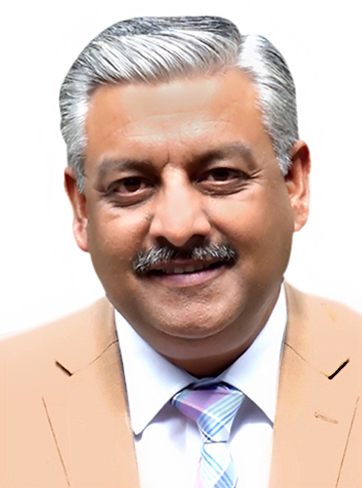
Sukhdev Roy (Virtual)
Dayalbagh Educational Institute, India
Sukhdev Roy (Virtual)
Dayalbagh Educational Institute, IndiaProfessor Sukhdev Roy received the B.Sc. (Hons.) Physics degree from Delhi Univ. in 1986, M.Sc. Physics from DEI, in 1988, and PhD. from IIT Delhi in 1993. He joined the Dayalbagh Educational Institute in 1993, where he is at present the Head of the Department of Physics and Computer Science. He has been a Visiting Professor at many universities that include, Harvard, Waterloo, Würzburg, Regensburg, Osaka, City University and Queen Mary University of London, TIFR, Mumbai and IISc. Bangalore. He has also been an Associate of the International Centre for Theoretical Physics, Trieste, Italy and is a Member of the Global Panel of MIT Technology Review. Prof. Roy has made significant contributions in Photonics that encompass nano-bio-photonics, silicon and neuro photonics, fiber optics, and optical computing. His experimental and theoretical research on nano-bio-photonic systems that includes low-power and high frequency optogenetic control of neural spiking, defines a new paradigm of technological convergence and innovation and opens up fascinating prospects for energy-efficient, ultrafast and low-cost all-optical information processing, sensing, energy conversion and healthcare. He has won a number of awards and fellowships that include, the, AICTE Career Award for Young Teachers in 2001, JSPS Invitation Fellowship, Japan in 2004, H.C. Shah Research Endowment Prize by Sardar Patel University in 2006, 1st IETE B.B. Sen Memorial Award in 2007, IETE-Conference on Emerging Optoelectronic Technologies Award in 2012, IETE-M. Rathore Memorial Award in 2016, the Systems Society of India’s National Systems Gold Medal in 2016, and the Distinguished Alumni Award by the Dayalbagh Educational Institute in 2021. He also has been awarded seven best paper awards in international and national conferences. He has published 175 research papers in reputed journals and conference proceedings and 11 book chapters. He chaired the 8th World Conference and Expo on Nanoscience and Nanotechnology, Philadelphia, USA in 2020. He has delivered more than 100 invited talks in India and abroad that include Keynote Addresses and Plenary Talks at International Conferences that include the prestigious International Year of Light commemorative Keynote Address, at the 38th Convocation of the International Council of Academies of Engineering and Technological Sciences (CAETS), in 2015 and at the Annual Meeting of American Physical Society in 2008. He was the Guest Editor of the March 2011 Special Issue of IET Circuits, Devices and Systems Journal (UK) on Optical Computing. He is an Associate Editor of IEEE Access and is a member of the Editorial Board of Optics and Photonics Journal. He is also a Senior Member of IEEE and SPIE, and a Fellow of the Indian National Academy of Engineering, the National Academy of Sciences, India, IETE (India), and the Optical Society of India. He is listed in the recent Stanford researchers’ study of Top 2% in World Ranking of Scientists-2020, in Optoelectronics and Photonics.
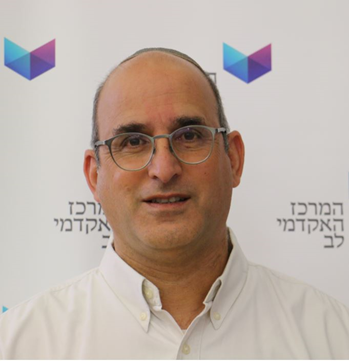
Salman Noach (Virtual)
Jerusalem College of Technology, Israel
Salman Noach (Virtual)
Jerusalem College of Technology, IsraelProfessor Salman Noach received his PHD in physics at 2003 from the Hebrew University Jerusalem ISRAEL. Since, he work at some startups companies and at 2007 he returned back to academy as a faculty member at the physics department at "Jerusalem College of Technology" there he founded the Solid State Lasers Laboratory. The lab is mainly engaged in applied research and development of CW and pulsed solid-state lasers, Nonlinear optics, Raman wavelength shifting and Optical amplifiers in the SWIR and mid IR range. The results of the lab research were the object of many publications in high-ranked journals in the optics and laser community and two patents. He is a senior member at OPTICA and member at SPIE.
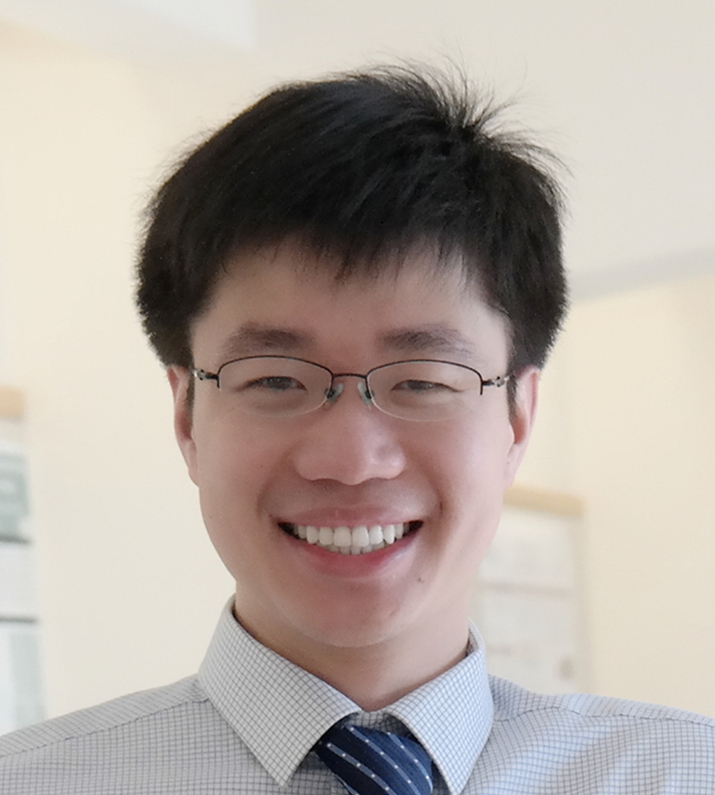
Junjie Yao
Duke University, USA
Junjie Yao
Duke University, USAAwards: Early Career Development (CAREER) Award. National Science Foundation (NSF). 2022 2019 Young Investigator Award. IEEE Photonics Society . 2019 Collaborative Sciences Award. American Heart Association . 2018 OSA/Quantel Bright Idea Competition (Finalist). Optical Society of America. 2017 Seno Medical Best Paper Award. SPIE conference Photons Plus Ultrasound 2016: Imaging and Sensing. 2016 Seno Medical Best Paper Award. SPIE conference Photons Plus Ultrasound 2015: Imaging and Sensing . 2015 Seno Medical Best Paper Award. SPIE conference Photons Plus Ultrasound 2013: Imaging and Sensing . 2013 Chinese Government Award for Outstanding Self-financed Students Aboard. The Education Ministry of China. 2012 Best Master Dissertation Award. Tsinghua University. 2008 Comprehensive Student Fellowship. Tsinghua University. 2008 KangShien Outstanding Graduate Fellowship. Tsinghua University. 2006 CyrusTang Fellowship (2002-2006). Tsinghua University. 2002 https://bme.duke.edu/faculty/junjie-yao
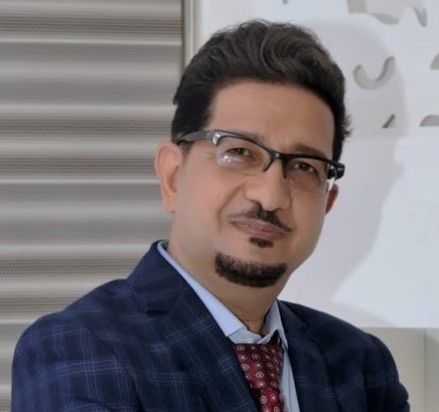
Jamal H. Ali
The City University of New York, USA
Jamal H. Ali
The City University of New York, USAJamal Ali received his B.S. in Physics from Yarmouk University in Jordan and an M.S. in Physics from the City College of New York (CCNY). He got his master’s degree in Science Education from Queens College. He obtained his Ph.D. in Physics from the City University of New York (CUNY) working at the Institute for Ultrafast Spectroscopy and Lasers (IUSL) of the City University of New York (CUNY). He worked on “Light Propagation in Paint and Prostate Tissues Media Using Visible to Mid-IR Spectroscopy and Imaging Techniques” for his thesis.
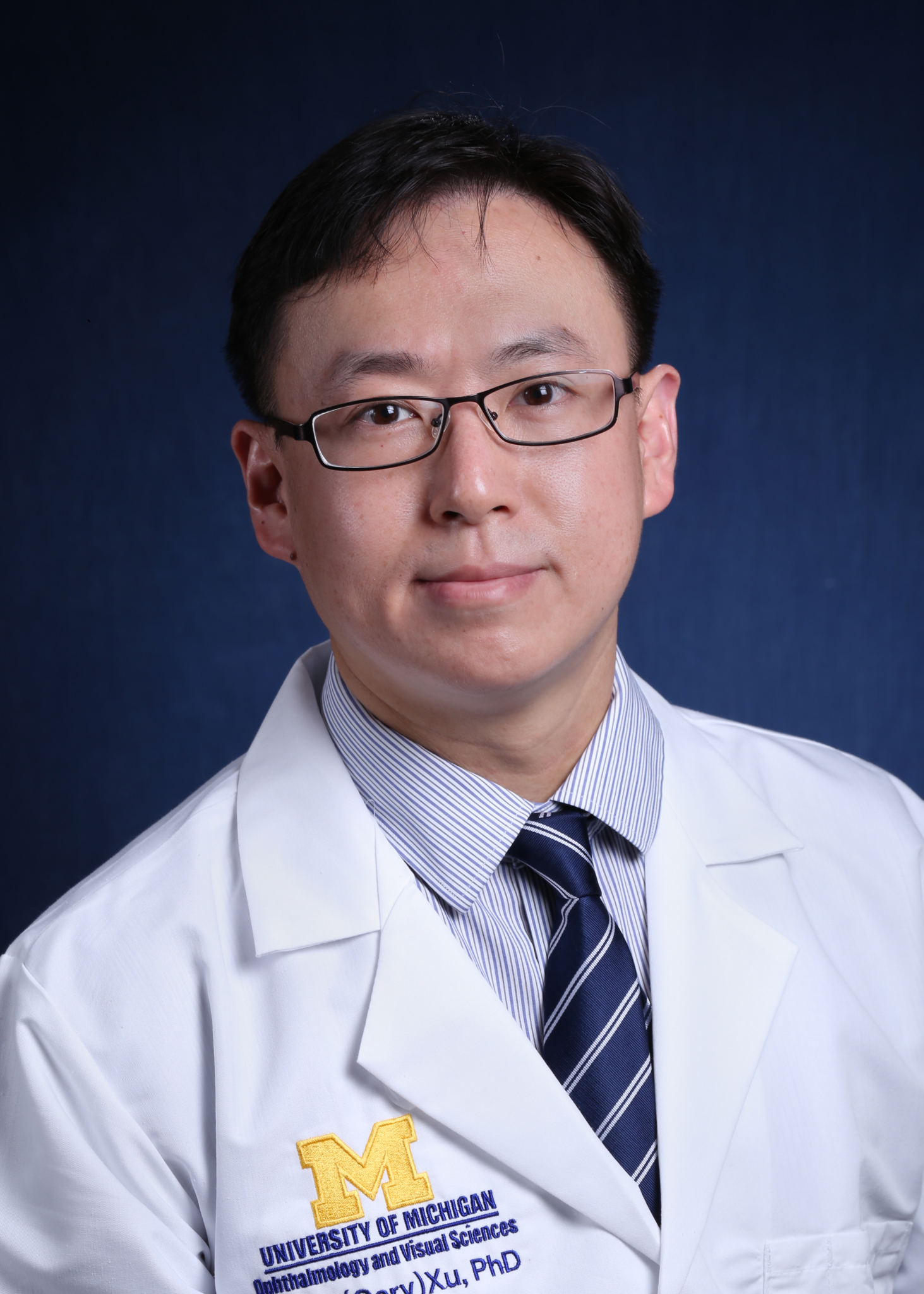
Guan (Gary) Xu
University of Michigan, USA(Virtual)
Guan (Gary) Xu
University of Michigan, USADr. Xu received his PhD and postdoctoral training in optical and ultrasound imaging in biomedicine. He received a predoctoral award from Congressionally Directed Medical Research Programs, a postdoctoral fellowship from American Heart Association, a Career Development Award from American Gastroenterology Association, a Senior Research Award from Crohn’s and Colitis Foundation and an R37 MERIT award from National Cancer Institute.
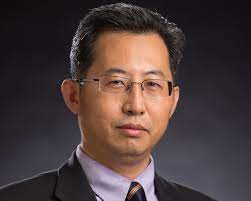
Daqing (Daching) Piao
Oklahoma State University, USA
Daqing (Daching) Piao
Oklahoma State University, USADaqing (Daching) Piao, PhD received BS in Physics (Applied Optics) in 1990 from Tsinghua University, Beijing, China. He earned MS and PhD, both in Biomedical Engineering, in 2001 and 2003, respectively, from the University of Connecticut (UCONN), Storrs, CT. After a total of two years of post-doctoral training in UCONN and Dartmouth College, he joined the faculty of the School of Electrical and Computer Engineering at Oklahoma State University in 2005. His research interest centers on applying light-tissue interaction principles for identifying and modulating tissue properties. Among the recognitions he has received, a New Investigator Award from the Prostate Cancer Research Program of DoD (Army Medical Research and Material Commaond) recognized his origination of transrectal diffuse optical tomography and the combination of it with transrectal ultrasound for prostate cancer research.

Pu-Ting Dong
The ADA Forsyth Institute, USA
Pu-Ting Dong
The ADA Forsyth Institute, USADr. Pu-Ting Dong is currently an NIH/NIDCR K99 postdoctoral fellow under the mentorship of Dr. Gary Borisy at the ADA Forsyth Institute. Pu-Ting received her PhD in Chemistry at Dr. Ji-Xin Cheng’s lab from Boston University in 2020. So far, she has 14 first or co-first author papers and co-authored 14 more. Pu-Ting is the exclusive recipient (1/300) of the 2018 SPIE Photonics West Translational Research Award, as well as the recipient of 2024 SPIE QPC Lasers Young Investigator Best Paper Award, the Susan Kinder Haake Travel Award (2024 IADR Microbiology/Immunology session), and the Ned Lally Award (2nd place, Mini-Symposium for Young Investigators, 2024 IADR). Pu-Ting was also selected as a 2024 Rising Star in Engineering in Health.
